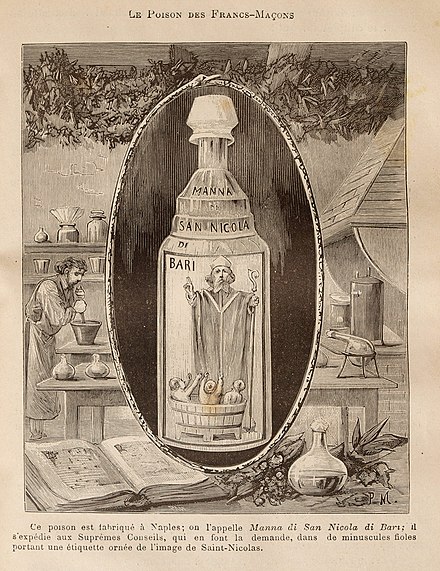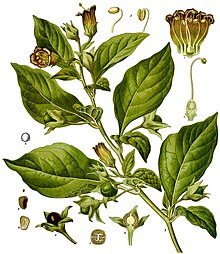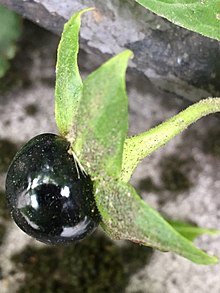
Colorless, tasteless, and deadly: The “Tofana Water” formula was actually poison masquerading as a beauty product.
By Khadija Rida
It was July 12, 1633, in Palermo, Italy, when Thofania d’Amado was executed for causing her husband’s death. On that day her daughter, Giulia Tofana, had now lost both her parents, but she had inherited the knowledge to start her very own cosmetics line. However, this would not go down in history as just any ordinary cosmetics line because, unfortunately, there was a very morbid twist to it. In the 20 years she ran her business, Giulia is said to have used her skills in chemistry to help kill over 600 men. These men died because their wives were evidently dosing them with a poisonous cosmetic from Giulia Tofana’s makeup line.
But why did she kill all those men?
Her actions were arguably just a byproduct of a sexist society. During her lifetime me, Italy was enjoying an era called the Renaissance, which lasted from the 14th to the 17th century. The Renaissance was a time of cultural rebirth after the dark years of the Middle Ages. This sparked many progressive cultural, artistic, political, and economic movements, as well as many advancements in science and philosophy. However, the outlook on women was still oppressive. The ideal woman was to be seen and not heard. No matter what class they were, they were controlled from the day they were born to the day they are married. But only to be under the control of their husband. In this time period, women were treated as objects being sold off to loveless and often abusive marriages.
Women had only three options to survive.
Out of these three options, the third one seemed more promising to the majority of the women. And this is where Giulia Tofana and her cosmetics line comes in.
While not much is known about Giulia Tofana’s early life, it is said she was born around 1620 in Palermo, Sicily, to Thofania d’Amado. As mentioned earlier, her mom was executed for the murder of Guilia’s father, Francis. It is not known For certain whether she did murder her husband or not. However, what soon would happen indicates that she was indeed a murderer.
Later on, Giulia Tofana got married and had her own daughter, named Girolama Spara. They lived together in Naples. She had become a widow just like her mother (possibly by poisoning her husband) and then moved with her daughter to Rome. Tofana was described as a mesmerizing woman who had successfully started her own cosmetics business, which was very impressive in a time period where women were not taken seriously.
Giulia had a soft spot for women who were stuck in their marriages, and she allegedly wanted to help them be free. Following information her mother left behind, and spending her own time at the apothecaries, she began developing and selling her own poison, brand named Aqua Tofana, as a desirable face cream or oil for women looking to be single again.
To make this enterprise even more discreet, Guilia Tofana packaged her poison in a glass bottle. The glass bottle itself was labeled “Manna of St Nicholas of Bari,” which was actually a popular healing oil at the time for blemishes. It was also packaged with an image of Saint Nicholas on the label. This meant that it could easily blend in on a woman’s vanity table beside her other cosmetics and not look suspicious; especially not a bottle featuring a picture of a saint.
Supposedly, she had chosen an image of Saint Nichols because he was known to have saved young girls from a life of prostitution by helping pay their dowries. For Tofana, however, instead, the idea was to protect young girls and women from marriage itself.
Aqua Tofana was laced with arsenic, lead, and belladonna. This made it somewhat more comfortable to carry out the murders. In the 17th century, belladonna was used as eye drops to dilate women’s pupils. After all, men found this wide-eyed look attractive and seductive. However, when ingested, it could be deadly.
And just like belladonna, Aqua Tofana was very deadly. Due to Tofana’s skills, the poison was colorless and tasteless. It could be easily mixed with any food or any drink. The dosages were spread over a few weeks to avoid suspicion. After the first and second dosage, the victim sometimes showed symptoms that were similar to a cold. This wasn’t suspicious to them either since there were many people who were dying because of cases of flu, or similar sicknesses during that time. After the victim’s third dose, vomiting, a burning stomach, and other digestion issues were common. But this also didn’t necessarily raise suspicion. The poison affected its victims slowly, giving men time to repent their sins and put their wills in order … in some cases giving their wives everything.
Eventually, the victim would meet his fate. And if an autopsy were conducted, no remnants of poison would be found in the body. After her husband’s death, the wife would play the part of a grieving widow until everything was settled. Then she would become free to live her life.
And if all that wasn’t enough to avoid suspicion, Giulia Tofana made sure that what she was doing remained top secret. She only sold her signature elixir with the help of her daughter and a circle of some reliable women who promised to keep this operation a secret. It is also said that a local Roman Catholic priest, Father Girolamo, had also secretly taken part in distributing her poison. Her group was so tight that no one really knew the ins and outs of it. Also, the product wasn’t usually sold to just any woman, because Tofana made sure to only sell products to women that she knew or women who had been vetted by past clients.
Even though many women knew of this secret distribution of poison, no one really said anything or even reported it. This is because women saw Guilia Tofana as a savior. Whether they used the poison or not, just leaving the bottle on their vanity table gave them a sense of power over their husbands. Another reason most clients wouldn’t speak out against her was probably because any woman with a bottle —whether she poisoned her husband or not—would also get in trouble if the multiple uses of Guilia’s beauty oil were made public. So overall, this became a tight community of women who helped keep each other’s secrets.
So what had made her get caught after 20 years of no suspicion?
Well, she was caught because of a bowl of soup.
In 1650 a woman had just bought her “makeup” and started to carry out her plan. She served her husband a bowl of soup laced with Aqua Tofana. But just as her husband was about to eat it, she began to panic and started yelling at him to not eat it. This made him angry and suspicious of her, so he began to beat her until she confessed to poisoning the soup. This woman was soon turned in to authorities, who tortured her until she admitted her strategy and that she had purchased Aqua Tofana from Guilia Tofana. Thus 20 years of subtle murders came to an end.
However, due to Guilia’s network of connections, she had gotten the news of her possible arrest before the authorities searched for her. Tofana escaped to a local church where she was granted sanctuary. Yet she did not immediately stop making poison. Instead, she encouraged a small group of nuns to start distributing the poison instead. That was until a rumor was spread that Guilia had used her Aqua Tofana to poison the local water supply. The church was invaded, and Tofana was arrested.
After brutal torture, Giulia Tofana confessed to killing as many as 600 men with a poison hidden under the guise of makeup between the years of 1633 and 1651.
Tofana was executed in the Campo de’ Fiori in Rome in July of 1659, alongside her daughter and three of her helpers. Over 40 of Tofana’s lower-class customers were also executed, while women of the upper classes were either imprisoned or escaped punishment altogether by insisting that they never knew their “cosmetics” were actually poison.
After her death, Tofana’s body was thrown over the church’s wall that had provided her with sanctuary, officially ending her reign of terror. However, many continued to fear that if they became sick, they were actually poisoned by Aqua Tofana. There was a rumor that Wolfgang Amadeus Mozart might have been poisoned by Aqua Tofana. However, this is just a legend, and even though his cause of death remains unknown, it is believed that it wasn’t Aqua Tofana.
Now, do you believe that this alleged mass murder spree was real? Because many still suspect that Giulia Tofana was framed for these alleged serial poisonings, and that men were merely jealous that Tofana had become a single woman of power and wealth. But if the charges against her were true, do you believe what Guilia Tofana did was justified, given the oppressive conditions and situations Italian women then had to endure?

